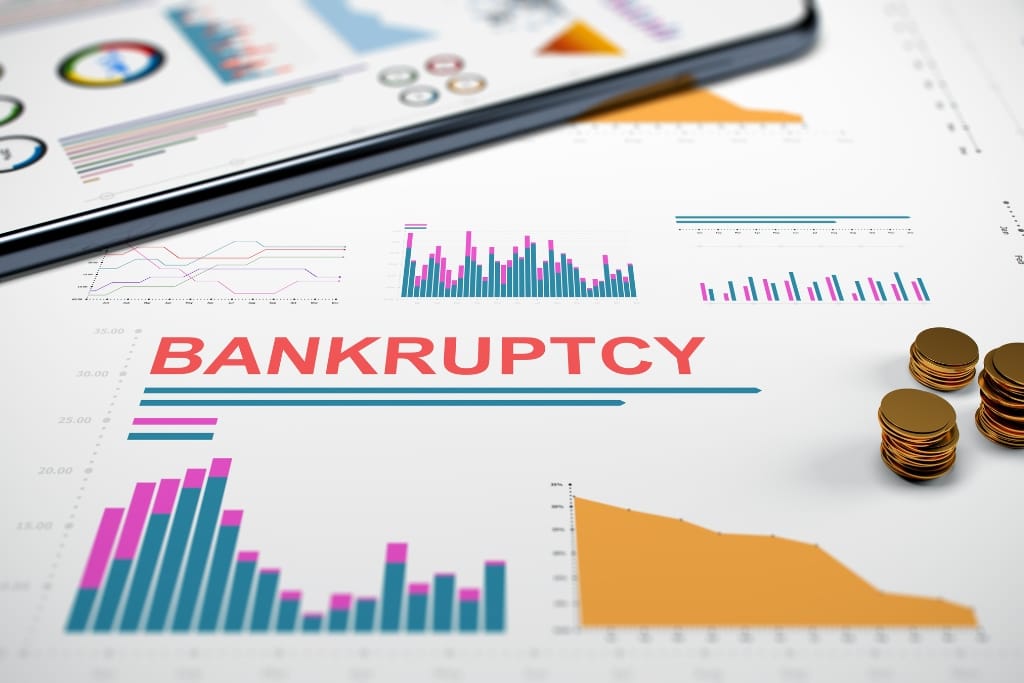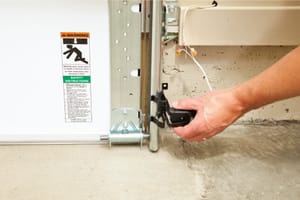Filing for bankruptcy is a difficult decision but it can be the right one. It allows you to wipe away debt and start fresh.
But one of the consequences of bankruptcy is that it stays on your credit report for years, making it hard to get new lines of credit and make large purchases.
Fortunately, there are ways to rebuild your credit after a bankruptcy filing.
Here are 10 ways you can take to improve your credit score and start rebuilding your financial future.
1)) Start Budgeting
One of the most important things you can do is create a budget and stick to it - this will help you stay out of debt and gradually improve your credit score.
Make sure that you include all expenses - from rent to groceries - to ensure that you are living within your means.
Tips for Effective Budgeting:
- Track Your Expenses: An important step towards effective budgeting is tracking your expenses. Keep track of every dollar spent, whether it's a major expense like rent or a minor one like a cup of coffee. This will give you a clear picture of where your money is going.
- Prioritize Needs Over Wants: It's essential to differentiate between needs and wants. Needs are the things you can't live without, like food and shelter, while wants are things you'd like to have but don't necessarily need. Prioritize your spending towards your needs first.
- Use Budgeting Tools: There are numerous budgeting tools and apps available that can assist you in managing your finances. These tools can help you track your income and expenses, set spending limits, and can also send alerts when you are about to exceed your budget.
Budgeting is a fundamental step in rebuilding your credit after bankruptcy.
It helps in fostering responsible financial behaviors by keeping you aware of your income and expenses.
Moreover, prioritizing needs over wants aids in avoiding unnecessary expenditures.
Utilizing budgeting tools can further streamline this process, making it easier and more efficient.
Consistency is key when it comes to budgeting, and with time, this practice can significantly contribute to the improvement of your credit score.
2)) Check Your Credit Report
Errors on your credit report can be detrimental, so it’s important to check them regularly and dispute any errors or inaccuracies that may be present.
You should also keep an eye out for any signs of identity theft or fraudulent activity on your account as well, which could further damage your credit score if left unchecked.
Tips for Monitoring Your Credit Report:
- Regularly Review Your Report: Familiarize yourself with your credit report and check it regularly. The three major credit bureaus, Experian, Equifax, and TransUnion, offer free reports once a year. Regular checks will help you spot any inaccuracies or fraudulent activities.
- Dispute Errors Promptly: If you notice any incorrect information on your credit report, dispute it immediately. This can be done online through each of the credit bureau's websites. Prompt action can prevent further damage to your credit score.
- Set Up Fraud Alerts: Protect your credit score from identity theft by setting up fraud alerts with the three major credit bureaus. This will ensure you are alerted whenever a credit inquiry is made in your name, allowing you to confirm whether it is legitimate or fraudulent.
Regularly monitoring your credit report is a crucial part of rebuilding your credit after bankruptcy.
It allows you to spot inaccuracies and fraudulent activities early, preventing further damage to your credit score.
By disputing errors promptly and setting up fraud alerts, you take control of your financial health.
Stay vigilant and proactive in managing your credit – it's a pivotal step towards your journey of financial rebuilding.
3)) Establish New Lines Of Credit
Since bankruptcy will remain on your credit report for up to 10 years, one way to improve your score is by establishing new lines of credit with lenders who specialize in helping people with bad credit rebuild their scores over time.
This could include secured cards or personal loans, but make sure that you pay off any balances in full each month to avoid piling up more debt.
Tips for Establishing New Lines of Credit:
- Consider Secured Credit Cards: Secured credit cards are a great option for people rebuilding their credit. These cards require a cash deposit, which serves as your credit line. They offer the opportunity to demonstrate responsible credit use without the risk of overspending.
- Take Out a Small Personal Loan: Small personal loans are another way to rebuild credit. Ensure you can comfortably make the monthly payments before taking out a loan.
- Stay Consistent with Payments: Regular, on-time payments are crucial in improving your credit score. Ensure you pay off your balances in full each month to establish a history of consistent and reliable credit behavior.
Establishing new lines of credit post-bankruptcy is a strategic approach to improving your credit score.
Using financial tools like secured credit cards and small personal loans, while ensuring consistent, on-time payments, can demonstrate your creditworthiness over time.
It's important to navigate this process carefully to avoid falling back into debt.
With persistent and responsible credit behavior, you can gradually rebuild your credit, paving the way for a stronger financial future.
4)) Pay Bills On Time
Making sure that all of your bills are paid on time is key when trying to rebuild your credit post-bankruptcy, as late payments can quickly drag down a score even more than before the filing took place.
Setting up automatic payments for all pertinent bills is an easy way to ensure that nothing slips through the cracks.
Tips for Timely Bill Payments:
- Automate Your Payments: Setting up automatic payments is a surefire way to never miss a due date. Most billing companies provide this option which debits the amount directly from your bank account on a specified date.
- Use Budgeting Apps: Utilize budgeting apps to remind you of upcoming bills. These apps can also assist in managing your finances by categorizing your expenses and providing a visual representation of your spending.
- Organize a Bill-Paying Day: Designate a specific day of the week or month as your bill-paying day. Regularly taking time to review and pay your bills can ensure no payment is overlooked.
Timeliness in paying bills is a critical habit to cultivate when rebuilding your credit.
By automating your payments, using budgeting apps, and setting aside a specific day for bill payments, you can ensure you never miss a due date.
Late payments can heavily tarnish your credit score, so prioritizing on-time payments is a must. Every timely payment is a step forward in your credit-rebuilding journey.
5)) Get A Secured Card
Secured cards require a deposit upfront and they often come with higher interest rates or fees than conventional cards, but they are an effective way to demonstrate responsible spending habits while still rebuilding a good payment history at the same time - both factors which play into building up a good credit score over time.
Tips for Getting a Secured Card:
- Research Your Options: Not all secured cards are created equal. Some have lower fees and better terms than others. Be sure to compare offerings from different financial institutions to find the best fit for your needs.
- Understand the Fees: Secured cards often come with higher fees. Make sure you understand all the associated costs, such as annual fees, late fees, and interest rates, before applying.
- Make Payments On Time: Use your secured card responsibly by making payments on time. This will not only help build your credit but also potentially lead to an upgrade to an unsecured card in the future.
Securing a credit card is a practical and effective strategy to demonstrate responsible financial behavior and rebuild your credit history.
It's imperative to research the market, understand the associated fees, and commit to timely payments.
While this approach may come with higher fees and interest rates, the potential benefits to your credit score and the opportunity to upgrade to an unsecured card in the future make it a worthwhile consideration in your credit-rebuilding journey.
6)) Keep Balances Low
Once you have started using a few accounts again post-bankruptcy, try not to use them too much; instead, focus on keeping balances low across all accounts since high utilization percentages (the ratio between how much money is owed versus available balance) can harm scores fast.
Tips for Keeping Balances Low:
- Use Credit Sparingly: Try to use your credit cards only for necessary purchases and aim to pay off the balance each month. This can keep your utilization ratios low and help boost your credit score.
- Make Multiple Payments: If you find that you're using a large portion of your credit limit each month, consider making multiple payments to keep your balance low throughout the billing cycle.
- Request for Credit Limit Increase: If it's feasible and you're confident about not overspending, request a credit limit increase on your cards. This can help lower your credit utilization ratio, but remember, the objective is not to incur more debt, but rather to reduce the ratio of used credit to available credit.
Maintaining low balances on your credit accounts is a crucial aspect of credit score improvement.
Practicing restraint in credit usage, implementing multiple payments throughout the month, and responsibly increasing your credit limit can contribute to reducing your credit utilization ratio.
The goal is not to create more debt but to manage your existing credit efficiently.
Every step taken towards lower credit utilization is a stride towards a healthier credit status.
7)) Become An Authorized User On Someone Else's Account
If someone close to you has excellent payment records and plenty of unused available balance space on their card(s), consider becoming an authorized user.
This will allow some positive information about their good spending habits onto your record as well.
Just make sure not to abuse this privilege by going overboard with purchases or letting someone else run up huge tabs without paying them off first.
Tips for Becoming an Authorized User:
- Choose Wisely: Ensure that the primary account holder has a history of responsible credit usage and a good credit score. Their habits will directly impact your credit score.
- Set Boundaries: Discuss spending limits and repayment expectations with the primary account holder. Remember, it's their account, and you should respect their rules.
- Monitor the Account: Keep an eye on the account's balance and payment history. Any late payments or high balances will also reflect on your credit report.
Becoming an authorized user on someone else's account can provide a valuable boost to your credit rebuild.
However, it's critical to establish a clear agreement with the primary account holder.
Equally important is ensuring they have responsible financial habits, as their actions will directly impact their credit score.
Keep track of the account activity to ensure it positively impacts your credit-rebuilding journey.
This strategy requires respect, trust, and open communication to be successful.
8)) Use A Co-Signer When Necessary
If there's something larger like a car loan or mortgage that requires co-signers and because banks don't trust borrowers after bankruptcies yet then work hard to find someone willing to trust to obtain financing needed to purchase the item desired need.
Always pay back every penny owed otherwise, you risk dragging down your co-signers' good standing too.
Tips for Using a Co-Signer:
- Select a Trustworthy Co-Signer: Choose a co-signer who has a strong credit score and a solid financial history. They should be someone who trusts your ability to repay the loan and is willing to take on the risk.
- Communicate Clearly: Be open with your co-signer about the responsibilities and risks involved. They should understand that if you default on the loan, they will be held responsible for repaying it.
- Commit to Repayment: Demonstrate your commitment to repaying the loan. Develop a repayment plan and share it with your co-signer. This will show your dedication and ease their concerns.
Enlisting the help of a co-signer can be a viable strategy when attempting to secure larger loans post-bankruptcy.
This approach should not be taken lightly. It is crucial to choose a co-signer who is financially stable, trustworthy, and understands the risks involved.
Open communication and a clear commitment to repayment are vital. While a co-signer can help you attain a loan, the ultimate responsibility for repayment falls on you.
This method, if handled responsibly, can significantly aid in reestablishing your creditworthiness.
9)) Take Advantage Of Credit Repair Services
Companies specializing specifically in repairing bad histories offer services that range from analyzing reports, disputing errors, and updating information to making it more appealing.
The goal is to help clients raise their credit scores faster and easier than they could accomplish by themselves.
Be certain to research any credit repair company you consider and do your due diligence before signing any contract.
Tips for Taking Advantage of Credit Repair Services:
- Research Thoroughly: Before settling on a credit repair service, do extensive research. Look for reviews, testimonials, and any potential red flags. Make sure the company has a reputable track record.
- Understand the Services: Gain a clear understanding of what services the company provides. This should include analyzing your credit reports, disputing errors, and updating your information to make it more appealing.
- Read the Contract Carefully: Before signing any contract, make sure you understand all the terms and conditions. Be aware of any hidden charges, commitments, and what the service covers.
Credit repair services can potentially expedite the credit rebuilding process after bankruptcy.
However, due diligence is paramount - from selecting a reputable company to understanding the range of their services and carefully scrutinizing the contract terms.
These services can assist you, but the responsibility for credit restoration ultimately lies with you.
Making informed decisions and maintaining prudent financial habits will be the keys to your success.
10)) Stay Patient And Positive
Rebuilding after bankruptcy takes time and patience; don't expect overnight success.
Rebuilding takes time and patience but eventually, those efforts will pay off when creditors start offering better terms/rates once again thanks largely in part to higher scores reflective of responsible use over extended periods.
When you combine taking action to restore your credit score with a positive attitude, this can create an unstoppable amount of momentum.
If you remain consistent, your credit score will eventually be restored to its former financial glory.
Tips for Staying Patient and Positive During Credit Rebuilding:
- Maintain a Long-Term Perspective: Understand that credit rebuilding is not an overnight process. Set realistic expectations and focus on making consistent progress over time.
- Celebrate Small Wins: Recognize and celebrate small victories, such as paying off a small debt or increasing your credit score by a few points. This can help maintain your motivation during the journey.
- Keep a Positive Mindset: Maintain a positive attitude even during setbacks. Every step, no matter how small, brings you closer to your financial goal.
Patience and positivity are cornerstones in the process of credit rebuilding post-bankruptcy. It's a marathon, not a sprint.
It involves setting realistic expectations, celebrating small victories, and maintaining an unwavering positive mindset, even in the face of setbacks.
While the journey may be challenging, consistent efforts coupled with a patient and positive outlook can undoubtedly pave the way to financial recovery and restore your creditworthiness.
Conclusion
Reestablishing good credit after declaring bankruptcy isn’t impossible - it just requires patience, dedication, and discipline.
Applying these 10 tips should provide the guidance necessary to rebuild successfully while avoiding common pitfalls along the way.
As long as you stay patient and remain positive during this process, it won’t be long before you have reclaimed control over your financial future once again – no matter how dismal things might seem now!
Related Articles and Guides
- How To Build Your Credit After Bankruptcy
- How To Improve Your Credit Score After Chapter 7 Bankruptcy
- How To Rebuild Credit After Bankruptcy Discharge
- How To Confirm Removal Of Bankruptcy From Credit Reports
- How To Remove Bankruptcy From Credit Report
- 10 FAQs About How To Restore Credit After Bankruptcy
Download Our Free E-book!








